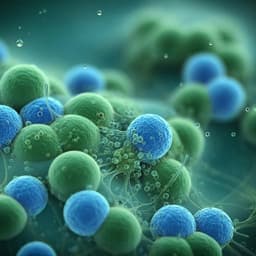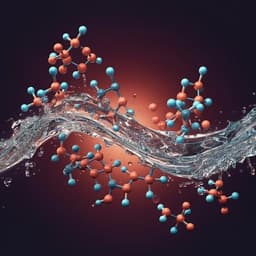
Agriculture
Deposition and water repelling of temperature-responsive nanopesticides on leaves
J. Tang, X. Tong, et al.
Discover a groundbreaking nanopesticide formulation featuring tebuconazole encapsulated in innovative temperature-responsive copolymers, developed by a team of expert researchers. This study showcases enhanced leaf adhesion and reduced wash-off, outperforming traditional commercial formulations, all while significantly lowering toxicity to zebrafish.
Playback language: English
Related Publications
Explore these studies to deepen your understanding of the subject.







